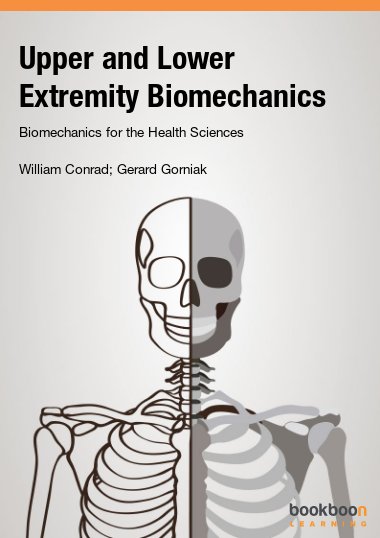This study guide for Biomechanics was developed from over 20 years of course materials used by thousands of students and multiple instructors to teach Biomechanics at 2 Universities and 4 campuses. There are numerous drawings, photographs, diagrams, tables; study questions and learning activities. Topics include basic mechanics; the mechanics of the shoulder complex, elbow complex, wrist complex and hand; the mechanics of the hip, knee, ankle complex, foot, and gait; the mechanics of the spine, posture and the temporomandibular joint. The final section describes the mechanics associated with connective tissues, cartilage, bone, muscle and nerve and the effects of aging on these tissues.

الوصف
المحتوى
book.tabs.learning objectives
- About the Authors
- Preface
- Basic Mechanics
- Forces
- Loads and Stresses
- Forces as Vectors
- Mechanical Advantage
- Torque or Moments
- Linear Motion
- Angular Motion
- Joint Movement
- Types of Synovial Joints and their Movements
- Determining Arthrokinematic Motion
- Concave/Convex Rule
- Joint Articular Positions
- Upper Extremity
- Shoulder Complex
- Elbow Complex
- The Wrist Complex
- The Hand
- Lower Extremity
- Extremity Biomechanics of the Hip
- The Knee
- The Ankle (Talocrural) Joint
- The Foot
- The Hip
- The Knee
- The Ankle
- Ankle and Foot Positions During Gait
- Mechanics of Ascending and Descending Stairs
- The Hip
- The Knee
- The Ankle
- Support Limb
- Non-Support Limb
- Appendix 1: Terminolgy and Definitions
- Appendix 2: Anthromorphric Tables Add All Tables
- Appendix 3: Formulas and Abbreviations
- Biomechanics Study Questions
- Bibliography and References
Explain the phases of the gait cycle and their effects on leg movement. Describe the function of the plantar fascia in foot arch stability during walking. Identify the muscles used for climbing and going down stairs. Analyze how foot joints adapt to different surfaces and movements.